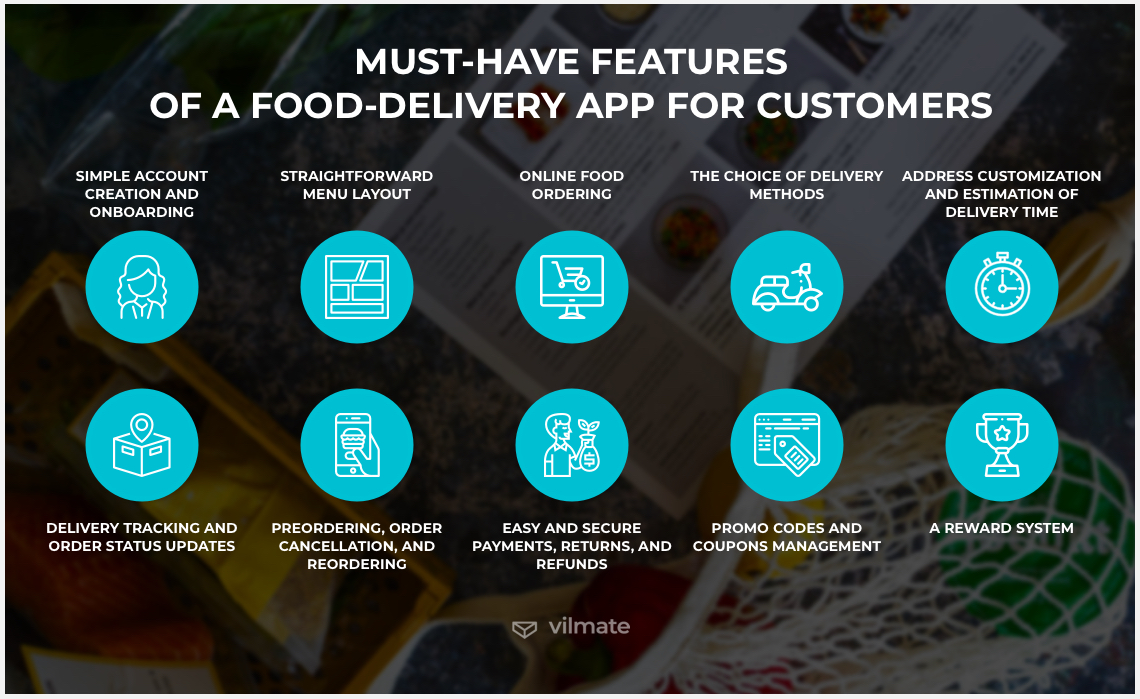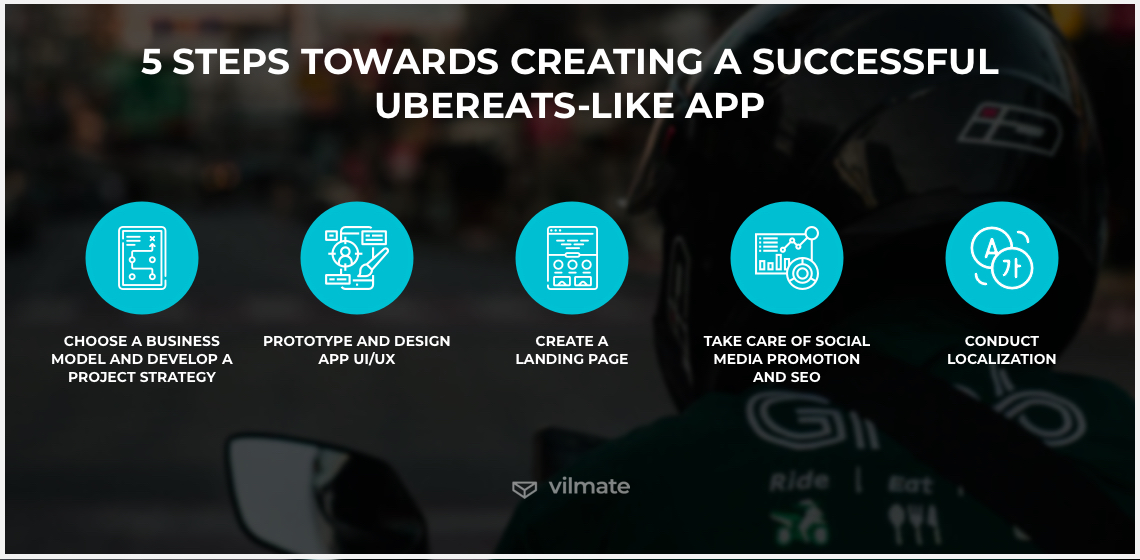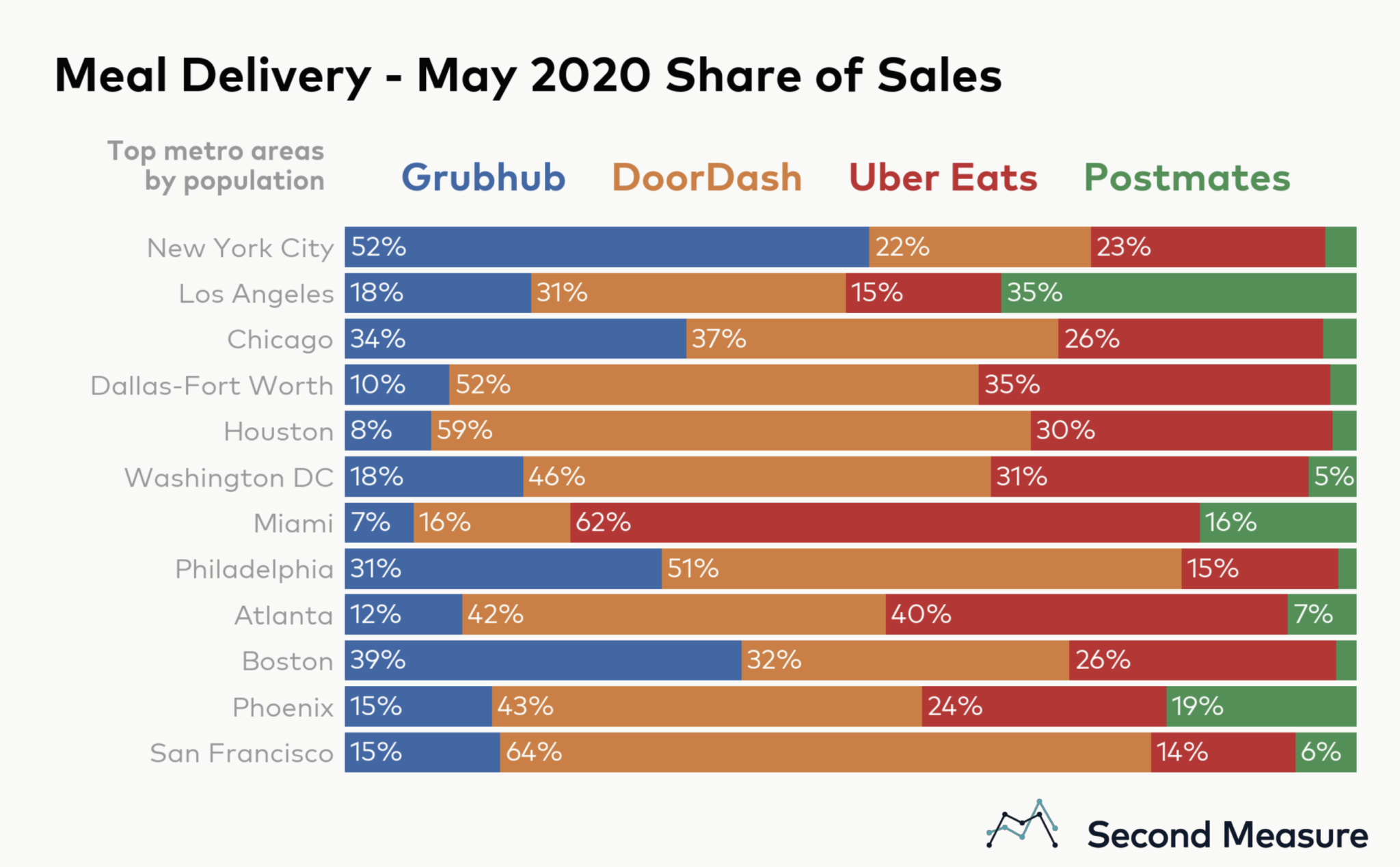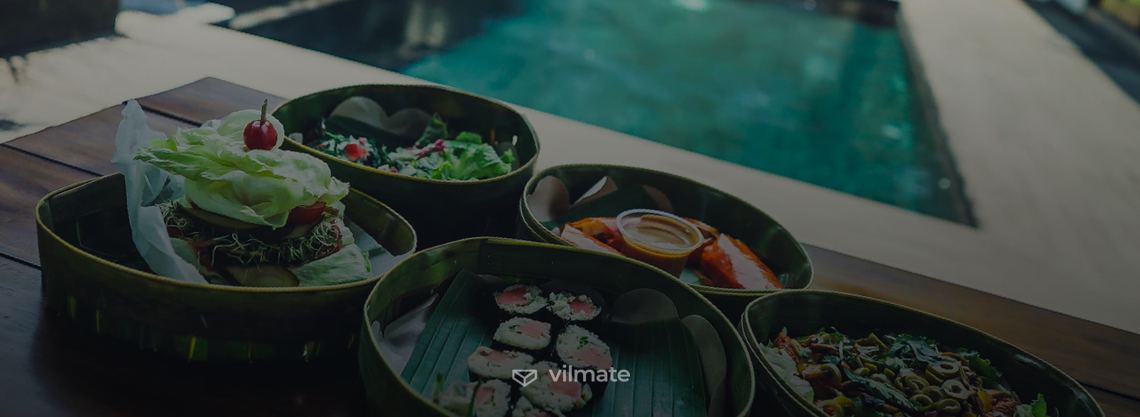Not so long ago, on-demand food delivery services were synonymous with a busy lifestyle and being always on the go. But in 2020, in the face of the novel coronavirus outbreak, the online food delivery segment has rapidly shifted from simple deliveries to creating the genuine “Three-C” experience for customers. On-demand food delivery apps offer comfort, convenience, and customization to users as well as provide a lifeline to local businesses and restaurants. Services like Glovo and UberEats take every effort to keep their deliverers and customers safe, healthy, and satisfied, as people are forced to stay at home.
No wonder that (even quite apart from the pandemic) the demand for online food delivery has constantly been growing over the past few years. By 2024, this segment is forecast to amount to US$182,327m worldwide, and the number of active users is expected to double compared to 2017.
In our article, we are going to discuss how to build a food delivery app like Uber Eats so that to be able to successfully address the industry-unique challenges and adequately compete with the well-established big players like Postmates, Glovo, GrubHub, and DoorDash.
Food-delivery app models
The online food delivery is not that homogenous as it may seem. Of course, they all do the same job of allowing people to have their favorite places at their fingertips, but the eServices in this segment have a couple of variations. Or, more precisely, there are two models that differ in terms of who takes responsibility for making the delivery: a restaurant itself or a third-party platform like UberEats.
Restaurant-to-consumer delivery apps
Presently, social media influencers and mass media insist that it is absolutely better to order directly from the restaurant. Third-party apps most often charge commission fees while ordering directly. A customer may be sure that the restaurant makes more money off of their order. That is particularly important if one’s aim is not only to order food but also to support the place financially.
Under this business model, a restaurant uses its own application to support food delivery to end-users. Statistically, in 2020, it is almost a 50/50 ratio of direct to mediated food delivery services use (US$65m to US$70m). And up to 2025, the ratio is not expected to change dramatically. Some customers just do not want third-party apps to interfere with their direct relationship with a restaurant, bar, or pub. In turn, restaurants can utilize their own platform, social media, and other channels they control to encourage direct orders and offer perks to customers who reach out to them this way.
Third-party delivery applications
This business model is also known as a platform-to-consumer delivery app. It focuses on giving restaurants a platform that would handle the delivery process for them. This platform is usually an application where users and restaurants meet. It is an excellent solution for the places that wish to offer a food delivery option but are reluctant to handle it themselves.
Besides, third-party delivery applications have their advantages for restaurants, such as:
- A good user experience
- High efficiency
- A ready-made infrastructure
- No need to train delivery staff
- An additional customer acquisition method
- The restaurant focuses on the product quality

Must-have features of a food-delivery app for customers
Regardless of which business model you are going to pursue, the set of features an on-demand food-delivery application should offer to customers must be just as comprehensive as the in-person experience that a service provider delivers to them. With that said, a food delivery service like UberEats or Glovo is not just about giving your customers a means to order anything and everything at the click of a button. It is a whole new experience of interacting with a restaurant. The following feature will ensure that this experience is enjoyable and satisfying for every customer:
-
Simple account creation and onboarding - make it easy and intuitive for people to create an account. Consider including an option for registration via social media accounts like Facebook and Google or a phone number. It is important to both educate customers about their new account and start building brand loyalty with this new product at this stage.
-
Straightforward menu layout - the primary user expectation is that a food-delivery application will be easy to navigate and that menu items will be visually emphasized to help the user better understand the product/service. One way or the other, people will need to search for restaurants and locate them on a map before actually placing their order. So, advanced search functionality will allow users to find what they want (e.g., in terms of cuisine, distance, pricing, and more).
-
Online food ordering - once a user finds the restaurant and dishes they want to get, it’s time to place the order. The sound online ordering system must offer an intuitive and seamless food ordering experience. Seamlessly adding, removing, and changing the number of items in an order is a must for a restaurant delivery service.
-
The choice of delivery methods - for users’ convenience, it is a good idea to add the possibility to order food for delivery, pick-up, or take-away. The restaurants offering both takeout and delivery expand their potential customer base and, as a result, their profits.
-
Address customization and estimation of delivery time - customization is one of the essential features of a food-delivery app, and lack of customization may result in an increase in the abandonment rate. Delivery address customization allows users to see the available-for-delivery restaurants nearby and to have an estimation of the time it will take to get the food.
-
Delivery tracking and order status updates - real-time delivery tracking provides a sufficient level of process visualization. You may add an interactive map for customers to check the current status of their orders. Or they should be able to choose to receive email and push notifications about the order status. Besides, with real-time tracking, online ordering becomes a lot easier and safer for customers.
-
Preordering, order cancellation, and reordering - customers like service providers who are flexible and highly responsive to customer needs. A pre-order feature will allow convenient scheduling of food delivery, pick up, or take out. According to a study by BRP, up to 32% of millennials (the target audience of food-delivery apps) use pre-ordering via a mobile app to pick up or dine in at a scheduled time. Users should also be able to cancel or reorder seamlessly without having to contact customer support.
-
Easy and secure payments, returns, and refunds - include multiple payment options for customers to make sure they can find the payment service they need. A food-delivery app like Uber must be able to process transactions from third-party payment service providers like MasterCard, Visa, and American Express. To enable card payments processing in an app, you need to integrate it with a variety of popular payment gateways, at the same time offering the option to accept payments through PayPal or cash upon the delivery. Also, an app should be NFC-enabled so that users could use Apple Pay, Samsung Pay, or Android Pay at check-out. If a customer decides to cancel their order or some other issues occur, then you need to have an efficient money return policy in place, so that customers have confidence in your service and face no difficulties in getting refunds.
-
Promo codes and coupons management - coupons, promo codes, and deals are sometimes an effective way to expand and enhance customer base growth. Be it free delivery or a discount, if you have such practice in place, it must be adequately managed. And this means you must have a system that will allow easily keeping track of all the current offers in a database. Besides, if you provide the customer with easy ways to get discount codes, then they will be more inclined to leave reviews and promote your app.
-
A reward system - top spenders and loyal customers deserve getting rewarded. Establish a reward system that would afford a clear and easily accessible incentive to consumers in the form of discounts and cashback. Customer loyalty is far longer-living when incentivized. Simply set up a reward system that aligns with the actual needs of your customers, and you will be rewarded yourself.
Food-delivery app features for a restaurant team
Features of an Uber-like app for restaurant workers will be slightly different from the ones that users need.
-
CRM system integration - a Customer Relationship Management system in a food-delivery app can improve the efficiency of service. With the help of CRM, restaurants can personalize their service for users and, at the same time, collect valuable data to provide a better customer experience.
-
CMS integration - a Content Management System will allow arranging content on the application. Restaurants will get a means for updating information about their places, such as the restaurant name, contact details, address, open hours, and others. They will be able to make changes to their menu, prices, delivery charges, add and update photos.
-
Order management - the successful order completion depends on the concerted effort of kitchen workers, managers, packers, and deliverers. They all need to have access to all relevant data about the order, the pick-up and drop-off locations, and any other information that could help them avoid mistakes and service problems. Besides, this feature can let couriers either accept or decline delivery requests.
-
API integration - APIs are a must for an on-demand food-delivery app. They keep business processes organized and streamlined, allowing for increased interoperability in systems. For instance, food-delivery apps like UberEats use APIs to integrate with technologies like Google Maps for navigation or Twilio for notifications. In such a manner, one can connect an application with a PoS system, a review system (like TripAdvisor), a payment gateway, an order tracking system, and others.

5 Steps towards creating a successful UberEats-like app
Warranting that all of the above features are in place is vital to the sustainability of the food-delivery app idea as a whole. Yet, there are some steps that a project team should take in order to ensure that the successful launch of an application can be accomplished. The following five measures will help you plan for the launch of an UberEats-like app:
1. Choose a business model and develop a project strategy. Earlier in the article, we’ve described the two main food-delivery app models. Choosing either of them will help determine a strategic plan for project implementation. This strategy must adequately consider many important variables, including the set of tools and resources needed for building a viable app. It is also crucial to know one’s target audience. Defining the persona of the end user is the first step toward understanding user needs and expectations. Identifying market gaps and forming user groups relevant to your app may be another critical part of your strategy. Thus, planning the project strategy has the potential to increase the chances of reaching an effective result vastly.
2. Prototype and design app UI/UX. The food-ordering app design must be aligned with the whole brand strategy. Therefore, after the ideation and planning phase, you should develop app mockups and prototypes. When you start building the prototype, it’s essential to pay attention to the user experience, so you can clearly see which areas the UX designers should focus on. The quality of the food ordering experience must be perfect, so keep an eye open for UI/UX design best practices to come up with a convenient tool for ordering and delivering meals.
3. Create a landing page. An attractive landing page is another point of consideration for a food delivery app like UberEats. If a mobile application is a primary tool that helps users achieve their goals, then a landing page can perform many supporting functions. It can start engaging users before the app is launched and serve as an online customer support platform. On a landing page, users must be able to get answers to the most frequently asked questions and get to know your brand better – don’t miss a chance to tell your brand’s story.
4. Take care of social media promotion and SEO. Social media promotion for a food-delivery app and search engine optimization of a website do not seem to be apparent steps to take. However, if done right, they can help increase application visibility and also improve your rankings in the search engines. These and other marketing practices can and should be implemented even before the app launch. In one of our previous blog posts, we’ve discussed the best ways to market an app and what mistakes to avoid in your marketing campaign.
5. Conduct localization. App localization and customization can help your app connect with users in a variety of international markets. Localization capabilities and relevancy are necessary when it comes to on-demand food delivery. For example, think of the types of customers in different areas, of possible cuisine preferences, and the favored payment options in the targeted countries. These categories are some useful indicators for figuring out how your app will appeal to local users.
The most popular food-delivery applications
Presently, there are a certain number of food-delivery applications that are popular either worldwide or regionally but still cover a considerable customer base.

1. UberEats. The Uber Eats mobile application operates in the biggest U.S., Canadian, Indian, Latin American, and European cities. After Uber established itself as a trusted taxi company, it went on conquering other areas, thus entering the food delivery industry in 2014. In 2019, the app processed 1.5 billion in food orders and managed to retain 700 000 active monthly users. In the United States, Uber Eats held the second-highest share of the market in 2018 with 24 percent. By 2022, it is predicted to grow by up to three percent.
2. Postmates. Postmates is a U.S. food delivery company that was launched in 2011. Since then, the app has widened its reach by offering to deliver many other products besides food. Their stance is that they are a pick-up service representing the customer (a person who has placed their order via the Postmates app). Postmates claims that technically they do not partner with restaurants, but only mediate.
3. Zomato. The Zomato app was launched in India in 2008. It is a courier service and a restaurant aggregator that provides information about eateries and offers food delivery to customers from partner restaurants. After the beginning of the coronavirus outbreak, users can also order groceries via a mobile application. It has 80 million monthly active users in 24 countries worldwide. In January 2020, Zomato acquired UberEats’ business in India, which was expected to add Uber’s 10 million in monthly food orders to Zomato’s own 40 million. That gave the company a competitive edge over its biggest rival in the region, Swiggy.
4. Grubhub. Grubhub was founded in 2004, and now it owns multiple food directory services: Seamless, Eat24, MenuPages, and AllMenus. The app is available in over 3k cities in the USA and London. It held the largest share of the U.S. food delivery market in 2018, earning 34 percent of the total stock. Grubhub claims to have 22 million active diners, feature more than 300,000 restaurants, and partner with over 155,000 of them.
5. DoorDash. According to CNBC, DoorDash leads in the food delivery market in the United States. Launched in 2000, it still keeps increasing market share. The service is available for use in the USA and Canada. Its special offer, the DoorDash Delight score system, gives customers transparency and allows them to find out about the delivery quality for the places on the platform. The evolving algorithm ensures increasingly more accurate scores, which helps users decide what place to order from.
Conclusion
An on-demand food-delivery app like UberEats is undoubtedly an excellent enterprise, and its growing market share is an indicator of the burgeoning interest in on-demand services. A food-delivery application is a great way to attract more customers and grow the business. In order to succeed in your endeavor, consider all the points we’ve highlighted in our article, adopt the experience of the industry leaders, and follow best practices to ensure customers are happy with their experience.
Have an idea but don’t have time to build your app yourself? We’ll do it for you! Hire a team of tech professionals to bring your vision to life!

© 2020, Vilmate LLC




